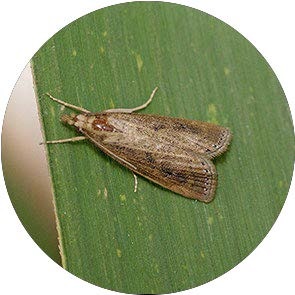


| Latin Name | Chilo infuscatellus |
| Common Name | Sugarcane shoot borer |
| Biology | Adults are nocturnal, laying eggs on the undersides of sugarcane and corn leaves. Larvae bore into stems, creating galleries that induce plant wilting and growth retardation, with distinct brown spot formations at infestation sites. Completing 2–4 generations annually, this species overwinters as mature larvae within host stems. |
| Damage | Primary hosts include sugarcane, corn, and sorghum. |
| Distribution Regions | South Asian sugarcane-producing regions |
| Monitoring | Pheromone lures mimic natural sex pheromones to attract male insects into specialized traps for population monitoring and suppression. As a core IPM component, monitoring enables early risk detection and targeted control. Mass trapping reduces mating opportunities to curb offspring populations. Protocols: ●Use only with matched traps. ●15-45 traps/hectare,replace/replenish every 4-6 weeks. ●Wear gloves or wash hands with detergent when switching lure types. ●Refer to trap-specific hanging instructions. |
| Recommended Traps | Delta Trap, Wing Trap |

Comparta su información de contacto para recibir soluciones de feromonas de precisión. En caso de que nuestra cartera existente no se adapte de forma óptima, nuestro equipo de química sintética iniciará el desarrollo personalizado, desde el diseño de la estructura molecular hasta la producción a escala.